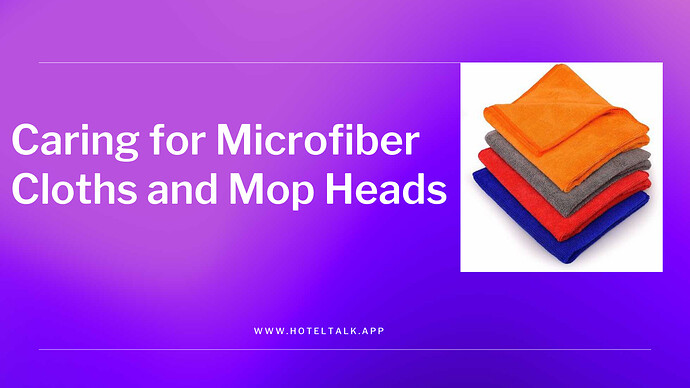The many benefits of microfiber cloths and mop heads are finally reaching more and more end users. Microfiber, constructed from polyester and polyamide nylon fibers, is approximately l/16th the size of a human hair.
There are approximately 90,000 microfibers in one square inch of a microfiber towel. It is the resulting density of thematerial that allows microfiber cleaning cloths and mop heads to lift and trap grime, making them more thorough cleaning agents than traditional cleaning cloths and mops.
However, less is known about the proper care and cleaning of microfiber products. For them to work their very best, microfiber cloths and mops do need to be cleaned on a regular basis. Usually, all that is needed after one or more uses is a thorough soaking in a disinfectant, rinsing, and then wringing out until all visible signs of soil are gone. They do not need to be machine washed after every use.
Eventually (and definitely after heavy use) microfiber cloths and mop heads will require a more thorough scrubbing and should be machine washed using household laundry detergent and hot water. Washing in warm water is necessary because it causes the fibers to swell, releasing the dirt and soil trapped within,.
Cleary suggests washing microfiber products with nothing else in the load. She explains that other fabrics can ‘‘shed’’ lint during the wash. The lint can become embedded in the microfiber, reducing its usefulness.
Using Bleach and Fabric Softener
Though microfiber is a very hearty material and can withstand from 500 to as many as 1000 washings, certain cleaning products are harmful to microfiber, affecting its longevity and usefulness. Bleach should not be used. Many studies report that fabric softener should never be used to clean microfiber. According to these studies, the microfiber will treat the fabric softener as if it were soil. It will attempt to store the tiny particles of the softener in its fibers. When this happens, the microfiber becomes stiff and hard and cannot be used effectively.
Drying Microfiber Cloths
- Microfiber can be dried in a commercial dryer using a low heat setting or simply hang microfiber cloths and mop heads out, allowing them to air dry.
- Never expose microfiber to extreme heat and Treat them as you would any other polyester fabric.
- Microfiber offers another benefit of which many end users are unaware. They are positively charged. That means they attract dust, which has a negative charge.
- This is another reason to keep microfiber products clean.
- There are so many pluses to microfiber, just a little cleaning care is well worth the effort.
